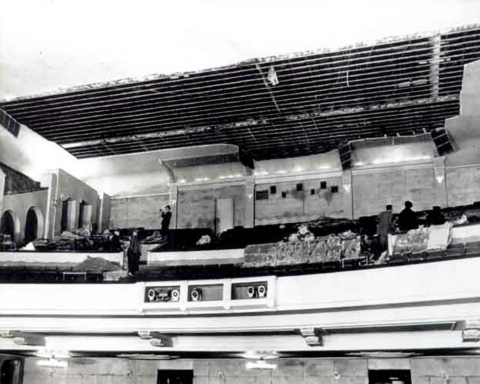Amid the hours of comment on Redwood City’s Harbor View project, the 400 letters to the Council, the multiple citizen-expert reviews, and attacks on the project and the detailed questions from the City Council, one fact stood out: something is going to be built on the 27-acre site east of Highway 101.
What that something might be is also likely to be opposed by the same forces currently arrayed against the current project, but the reality is so undeniable that it is worth noting again: something will be built there.
Whether in its current form or some other, the debate over Harbor View raises another, larger issue: what should be done – or can be done — with available property on the east side of the Peninsula? More on that further down.
Concerning the Harbor View project, it can be safely assumed that the developer, Jay Paul Company, already had in-hand a scaled-down version of the project long before the recent City Council hearing, at which it was obvious the current proposal is dead on arrival. Full disclosure: the Jay Paul Company is represented by the same people who publish Climate. They have not been consulted about this column.
Winning approval of a project is a lengthy to-and-fro and Jay Paul is not new to the process. They are seeking what the traffic will allow, and they probably have a pretty good idea of what kind of project still generates enough revenue to make it worth their while.
AN OPPORTUNISTIC DEVELOPER: Jay Paul was called “opportunistic” at the same council meeting, which is an odd thing to call any developer, in particular one who has been trying to get something approved for several years. Or, put another way, an opportunistic developer? What is the world coming to? It is the very definition of land development – buy a hunk of property, propose to build something new, make money. It is neither inherently good or bad. Someone wants to make money off it. Welcome to America, land of opportunity
Along the way, the developer may provide a public benefit, first in the form of the project, which will provide housing or office space for residents and businesses, and, second, in the form of other amenities – open space, access to public waters, sports fields, cleanup of a toxic site. In the second category, those amenities often are made to make the project more palatable to a community or a city council. And they often are trade-offs for other impacts, such as traffic. All of which is to say, so what? That’s the way it works. Get something, give something, or vice versa – it’s universal equation.
In Harbor View, the site is what used to be Lyngso Garden Supplies, which moved to San Carlos, and the Malibu Grand Prix amusement park, which moved to the Great Beyond, where there are some existential similarities to San Carlos. The last proposal, which is not going to be approved, called for more than 1 million square feet of high-end, office space contained in four seven-story buildings, plus one two-story amenities building (whatever that is), two parking structures and 36 percent of the site devoted to public open space.
The environmental impact report prepared on the project showed that the huge number of people commuting to work there would make traffic at Highway 101 and Woodside Road worse, if that even seems possible. Council members also were worried that it would worsen the jobs/housing imbalance that is driving up local housing costs.
A HOME OFFICE IS NOT A HOME: An obvious answer would be to build housing there, which may have the same impact on traffic, but would certainly affect the housing shortage.
Except, building housing east of 101 seems to be a non-starter, for a host of reasons, of which the Harbor View site is a good example. There is significant toxic contamination on the site from prior usages; the environmental burden for housing is substantially stricter than for office buildings, which means additional costs to the developer. It’s true up and down the Peninsula – east of Bayshore historically has been industrial, and not just light industry, like an auto shop, but heavy industry, like a cement factory.
Then there is the specter of sea-level rise. Much of the Peninsula east of 101 is landfill. As huge hunks of the Arctic ice break off and the oceans rise, it appears the bay could reclaim the property now considered waterfront land. I suppose we won’t want the bay to reclaim the toxics, either, but that’s a problem for another day. Anyway, for a host of reasons, cities that consider development of the eastside will approve commercial development, but not housing.
And that’s too bad.
The Peninsula is facing increasing regional pressure to build housing. Certainly, some cities haven’t done their share, but the choices are going to grow increasingly unpleasant.
We all agree El Camino Real is the most likely place for widespread development of high-rise, high-density residential projects. But few cities will bite the bullet the way Redwood City has and build more than three or four stories. What’s left, especially if the east side of 101 is out of the equation?
And what can be done in the face of political pressure to do nothing?
At the same Redwood City Council meeting, a couple of public speakers told the council that last year’s election meant that the council was supposed to hit the pause button, and by pause, they mean stop. Putting aside whether that is an accurate analysis of the most recent city council race, it’s clear the most vocal sentiment is for a citywide pause on development, and not just on commercial property, but housing.
It is an interesting dilemma: we all know there’s a shortage of housing and everyone thinks it ought to be built somewhere else. Finding a solution is going to mean some council members up and down the Peninsula will incur the wrath of an energized opposition.
Contact Mark Simon at mark.simon24@yahoo.com.
*The opinions expressed in this column are the author’s own and do not necessarily reflect the views of Climate Online.






